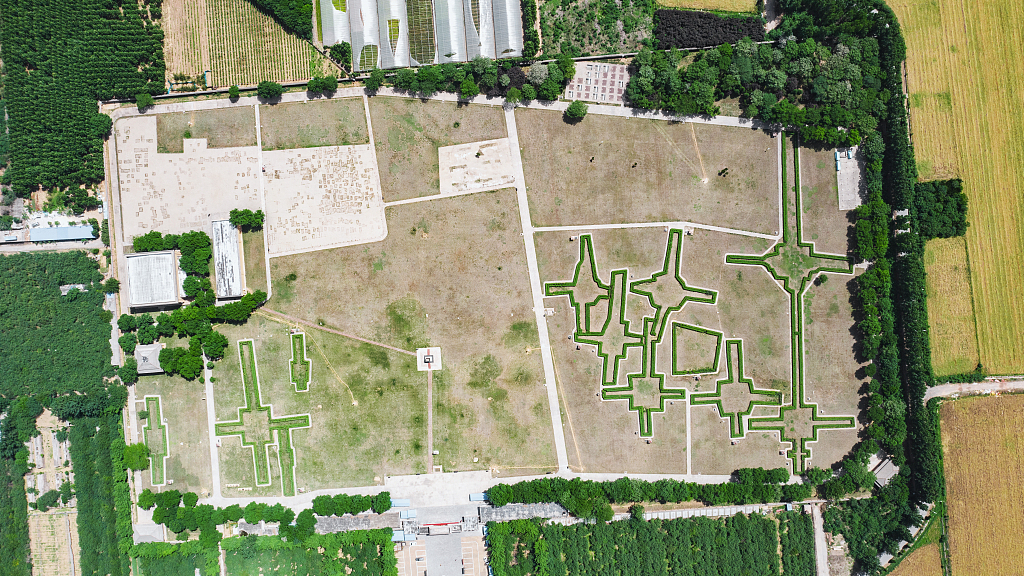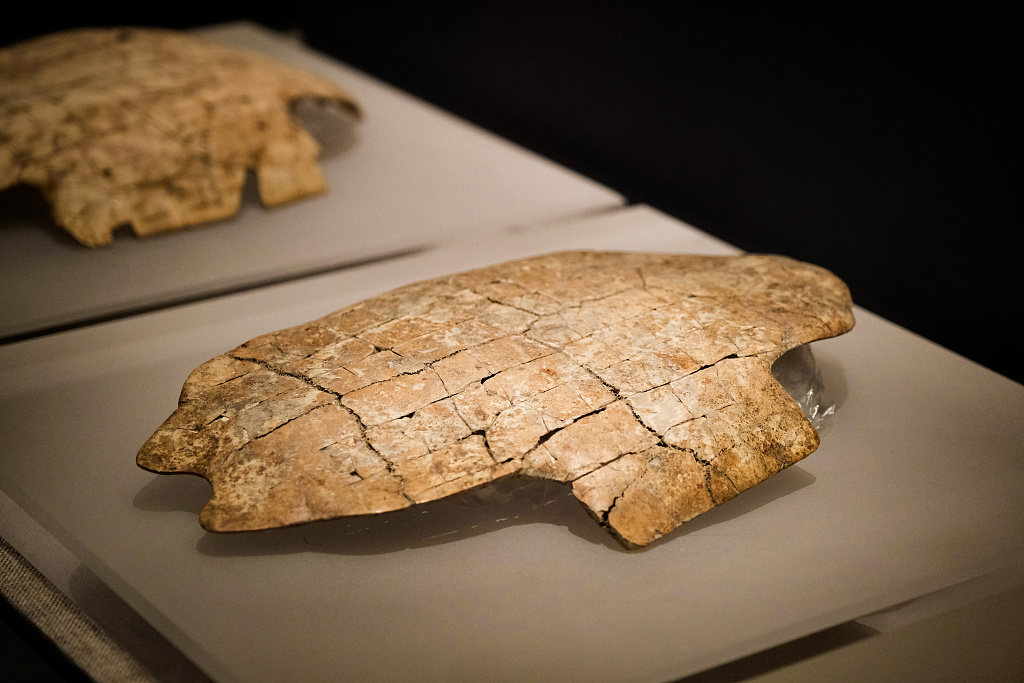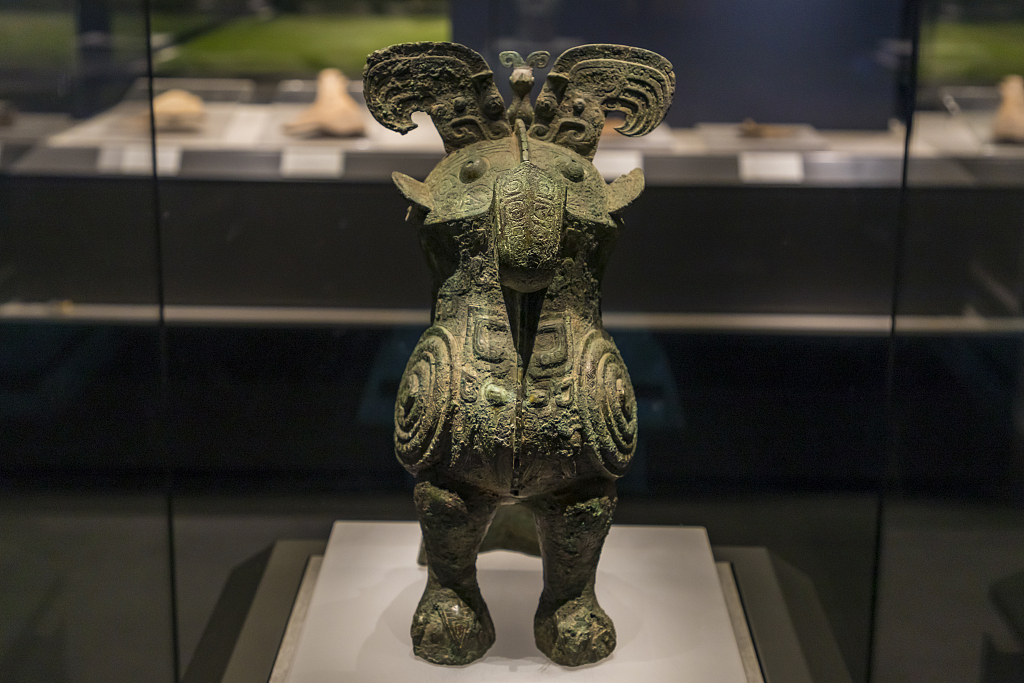
A file photo shows an aerial view of part of the Yin Xu site in Anyang, Henan Province. /CFP
A file photo shows an aerial view of part of the Yin Xu site in Anyang, Henan Province. /CFP
During the Spring and Autumn Period (770-476 BC), nearly 600 years after the fall of the Shang Dynasty (1600-1100 BC), historical records from the Shang Dynasty were progressively disappearing.
In 1899, the Chief of the Imperial College (or "guozijian") Wang Yirong purchased a collection of turtle shells and animal bones inscribed with ancient scripts from an antiques dealer named Fan Shouxuan. It was from these oracle bone inscriptions that scholars came to know ancient Chinese scripts. The discovery of the oracle bone inscriptions marked the beginning of systematic large-scale excavations at the Yin Xu (or literally translated as "Yin Ruins") site.

A file photo shows an oracle bone unearthed from the Yin Xu site on display at the Henan Museum in Anyang, Henan Province. /CFP
A file photo shows an oracle bone unearthed from the Yin Xu site on display at the Henan Museum in Anyang, Henan Province. /CFP
In a bid to locate more oracle bones, archaeologists conducted excavations on October 13, 1928 in Xiaotun Village, Anyang City, Henan Province, which helped to reveal some of the mysteries surrounding the Shang Dynasty that existed over 3,000 years ago. These first independent and systematic large-scale field excavations conducted by Chinese academics are often believed to mark the beginning of modern-day Chinese archaeology.
Since then, Yin Xu has become the largest and longest-running excavation site in China, yielding the richest array of cultural relics of any site in the country. Important cultural relics have been found distributed on both sides of the Huanhe River (which is also known as the Anyang River), covering an area of around 36 square kilometers.

A photo shows a bronzeware relic unearthed from the Yin Xu site on display at the Henan Museum in Anyang, Henan Province. /CFP
A photo shows a bronzeware relic unearthed from the Yin Xu site on display at the Henan Museum in Anyang, Henan Province. /CFP
In the following years, palaces, royal tombs, oracle bone inscriptions and bronze artifacts all made an astonishing appearance, confirming that Yin Xu was indeed the ancient capital of the Shang Dynasty after the Shang Emperor Pan Geng relocated to Yin.
Yin Xu still houses the palace, ancestral temple ruins, royal tomb sites, numerous clan and village settlements, family graveyards, sacrificial pits, oracle bone script repositories and craft workshop sites, which have yielded a rich collection of oracle bone inscriptions, bronze artifacts, jade objects and other exquisite cultural artifacts.
The complete city ruins, magnificent palace complexes, extensive royal tomb sites, highly developed bronze artifacts and a mature system of ancient Chinese characters prompted further research into various aspects of the Shang Dynasty, including its chronology, cultural distribution, rituals, beliefs, economy, society, livelihoods and environment – which have all helped to firmly establish the recorded history of the Shang Dynasty.